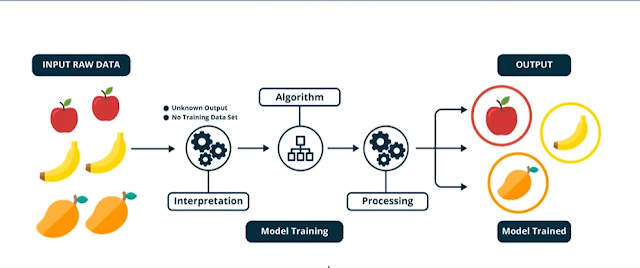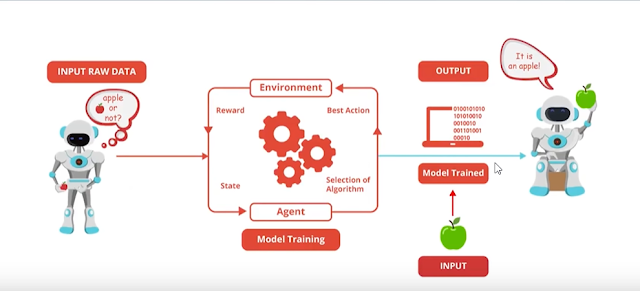Beginners Guide to Machine Learning
“Optimizing a performance criterion using example data and past experience”
Machine learning is a subfield of computer science that evolved from the study of pattern recognition and
computational learning theory in artificial intelligence. Machine learning explores the construction and study of
algorithms that can learn from data and make predictions on
data. Such algorithms operate by building a model from
example inputs in order to make data-driven predictions
or decisions, rather than following strictly static program instructions. In machine learning, data plays an indispensable role, and the learning algorithm is
used to discover and learn knowledge or properties from the data. The quality or
quantity of the dataset will affect the learning and prediction performance.
fig: How ML Works
History
In 1959, Arthur Samuel defined machine learning as a
“Field of study that gives computers the ability to learn
without being explicitly programmed”. Tom M. Mitchell provided a widely quoted, more formal definition: “A computer program is said to learn
from experience E with respect to some class of tasks T
and performance measure P, if its performance at tasks
in T, as measured by P, improves with experience E”. This definition is notable for its defining machine learning in fundamentally operational rather than cognitive
terms, thus following Alan Turing's proposal in his paper
"Computing Machinery and Intelligence" that the question “Can machine think?" be replaced with the question “Can machines do what we (as thinking entities) can
do?"
Types of Learning
Machine learning tasks are typically classified into three
broad categories, depending on the nature of the learning “signal” or “feedback” available to a learning system.
These are:
• Supervised learning:
The computer is presented
with example inputs and their desired outputs, given
by a “teacher”, and the goal is to learn a general rule
that maps inputs to outputs.
• Unsupervised learning:
No labels are given to the learning algorithm, leaving it on its own to find structure in its input. Unsupervised learning can be a goal
in itself (discovering hidden patterns in data) or a
means towards an end.
• Reinforcement learning:
A computer program interacts with a dynamic environment in which it must
perform a certain goal (such as driving a vehicle),
without a teacher explicitly telling it whether it has
come close to its goal or not. Another example
is learning to play a game by playing against an
opponent.
Between supervised and unsupervised learning is semi-supervised learning, where the teacher gives an incomplete training signal: a training set with some (often
many) of the target outputs missing. Transduction is a
special case of this principle where the entire set of problem instances is known at learning time, except that part
of the targets is missing.
Top Machine Learning Algorithms :
Choosing the proper machine learning algorithm or strategy is one of the fundamental assignments to build up an artificial intelligence or machine learning venture. Since there are a few algorithms are accessible, and every one of them has their advantages and disadvantages. Below are some of the most popular machine learning algorithms:
Road Map to begin with Machine Learning:
- Revise linear algebra (vectors, matrix multiplication, determinants and eigenvector decomposition). There is an MIT course in linear algebra you can take reference of it.
- After that revise calculus. Learn about single variable and multiple variable calculus. The link to the MIT calculus course is here.
- Get yourself used to with the python machine learning libraries like numpy, Pandas, Matplotlib, SkLearn, SciPy etc.
- Decide an algorithm and get coding.
Road Map for Algorithm Implementation:
- Find data to work on. Online sites like Kaggle and UCI provide a large amount of data sets.
- Once you acquire the data you can start to work with is by applying the various algorithms. The image below is a rough guide from SKLearn’s documentation.
- Visualize the data using python libraries like Matplotlib, Seaborn, etc.
- Tune the algorithm ie. use the best value of the learning rate, k value, etc.
- Evaluate your model using the SKLearn python library.








Awesome
ReplyDeleteWe are pleased to guide you!
Delete